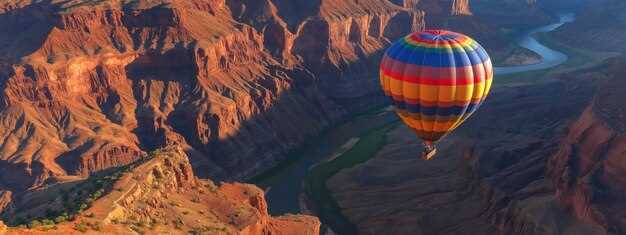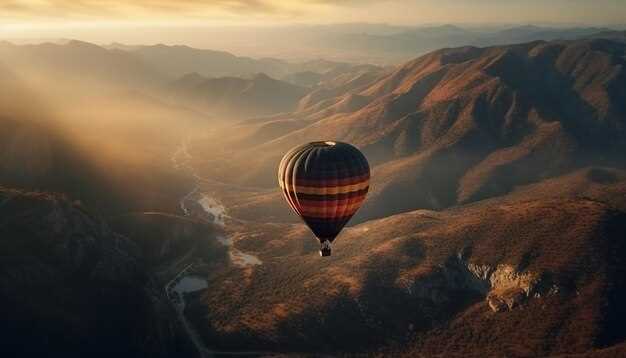
Book your sunrise hot air balloon flight at least six weeks ahead to secure a date that fits your plans. Arrive at the launch site in Alice Springs before dawn for the best light and cooler air.
Choose a company with an experienced crew and a well-trained pilot; check medical clearances if you have health concerns. Review the restrictions and the requirements for your peace of mind: weight limits, age limits, weather minimums, and consent forms. Expect a briefing from the local authority and a team that understands the rugged terrain of the Outback.
The sunrise spectacle over the rugged bush changes color every minute, and the balloon rises from a quiet field as you lift with the wind. There are reasons to choose dawn: calmer winds, cooler air, and alpenglow that paints the red earth. Operators report the best look occurs when the air is still and the sun sits low on the horizon. A typical ascent lasts eight to twelve minutes, followed by a gentle float that reveals the scale of the bush and distant ranges. For planning, check that the wind windows align with your date and follow the forecast from crowne safety updates.
Some packages include a complimentary post-flight toast and a free photo package to capture the moment. This can save you time and money and makes the experience better for memory keeping. To ensure a smooth day, arrange transport from your hotel to the launch site and back, and verify the date is stable in bad weather when flights might be canceled.
On landing, note that the ground crew performs a controlled touchdown on a stable area, then you return to the escort vehicle. The day ends with hot drinks and medical readiness info for people who may feel altitude fatigue; though uncommon, some travelers benefit from a quick check with medical staff after the flight. The operator provides practical tips to recover from the chill and wind, including a light breakfast and staying hydrated.
What to wear for the cool dawn in Alice Springs
Wear a suitable layered system for the cool dawn of the activity. Start with a moisture-wicking base layer, add a warm mid-layer, and top with a windproof shell that keeps you comfortable as temperatures drop during the ascent.
- Base layer: breathable, moisture-wicking long sleeves and leggings in synthetic fabric or merino; avoid cotton that traps sweat.
- Mid-layer: fleece or light down to add warmth on the starting chill; you can adjust as the air rises.
- Outer layer: windproof, breathable jacket with a snug fit at the wrists to keep dirt out and warmth in.
- Head and hands: a warm beanie or knit hat, gloves, sunglasses to cut glare; a scarf or neck gaiter adds extra warmth.
- Footwear: sturdy closed-toe shoes or light hiking boots; breathable socks, and consider an extra pair in case they get damp.
- Accessories: sunscreen and lip balm; tie back long hair to prevent it catching on harness; a small pack keeps your necessary layers handy.
Details on safety and comfort: The rules in the northern operator’s policy require you to follow the crew’s instructions. They typically brief guests on the safety rules and remind them to keep sleeves down. The crew and their pilot will give final go-ahead before starting, and they remind you to stay warm until you board. This program uses a balloon, not a helicopter; if your itinerary elsewhere includes helicopter transfer, the same rules apply. Ground prep happens near dirt and under the launch area; the rugged terrain makes a good layering plan a must. These details ensure that you stay warm. The layering adds comfort and provides a guarantee of warmth throughout the tour, contributing to a lifetime memory for most guests. Generally, dressing smartly improves the overall experience.
Post-flight note: After landing, some tours offer a celebratory toast with wine to mark the moment; taste varies, but it’s a nice way to savor the connection between the landscape and your morning. If wine is not offered, a hot drink and a light snack still cap the experience.
Pre-flight briefing, safety gear, and weight guidelines
Wear sturdy, closed-toe shoes with a firm grip and secure laces. Dress in layered clothing for the chilly dawn, and keep hats, scarves, and phones secured to avoid losing items as you rise above the outbacks during sunrise, turning every ascent into adventures for diverse travelers and a memory for a lifetime.
Safety gear
The briefing addresses safety gear and flight rules, sharing where to place bags and how to move within the basket. Those with medical conditions should disclose them before the flight; a medical kit and first-aid service are available on board, and civil-aviation policy guides every maneuver to protect guests. Our service team addresses rock-strewn terrain assessments and sets expectations for a breathtaking, iconic sunrise while ensuring comfort and safety for every participant.
Weight guidelines
Weight guidelines require every passenger to provide their weight so the crew can balance the basket and maintain lift. The policy sets a total payload limit and assigns positions to balance above the burner. We assess weights at check-in for thousands of flights and adjust flight plans accordingly, allowing safe departures even when winds are light. If you surpass the limit, the team addresses alternatives to protect service quality and safety, and those options may include rescheduling to a later sunrise in the outbacks.
What to expect from the aerial views: Uluru, Kata Tjuta, and the sunrise

Put on sturdy closed-toe shoes and a chilly-weather layer; check the online forecast and review the flight details before heading to lasseters.
As the burner fires and the basket lifts into the dawn, bush air thins into calm. Awe-inspiring views open up over Uluru and Kata Tjuta as the sun rises, painting the red rock and the outback in warm gold and pink.
During the ascent, expect slices of color spread across the horizon; you will see native plants, dust tracks, and distant ranges that frame the rising sun as it climbs higher.
Participants typically stay seated with hands on the rail; this helps balance and safety while you soak in the incredible, dawn light. Before takeoff, the guide explains safety precautions and what to expect during the climb. Each participant feels the unique hush as the horizon brightens.
Starting moments reveal a steady, gentle lift; the altitude remains comfortable, and the crew keeps the basket level and the burner flames controlled. The lasseters team maintains a tight safety protocol and offers a quick post-flight debrief as a guarantee of service you can trust.
Precautions include wearing shoes with grip, securing hats, applying sunscreen, and keeping belongings in pockets or with a strap. Listen to ground crew instructions during landing and exit onto a flat, paved area with care.
The experience includes light refreshments after landing, plus a chance to review sunrise photos taken during the flight. Photos taken can be accessed online afterward; a gallery lets participants download their favorite shots and share the awe-inspiring moments from the outback’s early light.
Photo and video tips for sunrise over the outback
Start with RAW capture and a sturdy tripod; set ISO 100, aperture f/8, shutter 1/125 for stable scenes, and bracket exposures at -1, 0, +1 EV to cover the high dynamic range of sparkling sunrise across the ground and scrub. If you shoot with a compact camera, take a second set at 1/250 to freeze any wind in grasses taken during the moment.
Carry a versatile kit: a wide lens (16-35 or 24-70) for expansive horizons, plus a telephoto (70-200) to isolate silhouettes of native flora and the balloons. Clothes that breathe, a light hat, and sunscreen boost comfort in the cool dawn; layer up so you can shed items as the sun climbs. Keep water and fruit or snacks handy for energy during the following moments before and after takeoff. If you plan video, bring a small stabilizer for smoother motion and consider the available memory cards to store those memories; ask your friends or the operator to share their cards if you need extra space.
Camera and composition tips
Frame with foreground ground texture or a single tree to anchor the scene; use the rule of thirds to place balloons and the rising sun. In the first 20 minutes after sunrise, light is sparkling and shadows are long, so shoot those moments at multiple angles. For colors, manual WB around 5400-5600K preserves warm tones; shoot RAW and adjust in post to maintain detail in highlights and shadows. For video, shoot at 24-30fps; keep shutter near 1/50-1/60, and perform slow pans to follow the balloon’s ascent. If you have the option, capture some shots at slightly underexposed settings to protect the sky, then blend for a natural HDR look. The plaza near the launch site provides a clean backdrop where the balloons rise, and you can incorporate those silhouettes into your sequence. sunset tones can echo into the dawn palette, helping you anticipate color shifts. In most cases, the best shots are taken during the earliest light, when those orange and pink hues still glow on the ground.
When you review, focus on those memories you want to keep: the lines in the sand, sparkling air, and the arc of the basket against a high sky. If the flight is conducted under wind limits, you’ll shoot a series of shorter clips that show the evolution from dawn to full morning light. If you booked a dawn slot, arrive early at the ground, where your crew will guide you to positions that maximize your opportunity.
Practical tips for safety and workflow
Follow precautions issued by the operator and aviation authority, especially about staying clear of the ground crew and the basket during launch. Prior to takeoff, plan several ground shots so you have a bank of stills and clips to assemble later; those shots are part of the story of your morning. Availability matters: booked slots fill quickly, and weather windows can shift; aim to arrive well before the scheduled time. Bring snacks and fruit for energy, water, sunscreen, and layered clothes to stay comfortable while you wait. After you land, review your footage in shade at a nearby plaza or resting area and back up the best takes; you’ll appreciate the clarity when you share memories with friends and family. Be mindful of limited access to restricted viewpoints and always follow local guidance for where to stand and how to move around the ground. With careful planning and respect for the environment, your sunrise over the outback becomes a vivid collection of high-quality memories you can relive for years to come. It follows a smooth plan conducted at dawn, aligning with winds and operator guidance to create strong, shareable clips.
After landing: transfers, champagne toast, and souvenir options
Book your post-flight transfer in advance and ensure it’s booked for a 15–30 minute window after touchdown. The chilly air of the dawn settles over the bush as the crew meets you at the field and guides you to the waiting vehicle above the landing zone. Prior to arrival, confirm the pickup point and your flight reference so the participating driver can locate you quickly and keep the handoff on schedule.
Transfer options are clear: private car for your group, a limited-seat shuttle, or a premium transfer from a nearby crowne property. The operator provides a coordinated handoff, and pickups are allowed only if booked through the official channel. If you have certain needs, request a wheelchair-accessible vehicle or a medical escort in advance; safety and comfort come first. Transit to your home base or hotel typically takes 20–40 minutes, depending on distance and traffic, with some hotels offering pickup points below the porte-cochère.
When the ride is ready, the crew offers a champagne toast or sparkling wine to celebrate the morning. Savor the moment as you review the highlights of the flight and the captivating dawn over the landscape, with wildlife sightings noted along the way. If you prefer non-alcoholic options, request sparkling water in advance. The team keeps the pace efficient and compliant with aviation safety standards to respect your day’s schedule.
Souvenir options

Choose from a personalized flight certificate, a set of photos received from the crew, Aboriginal art magnets, or small local crafts that reflect the outback. A balloon-themed keepsake, a reusable water bottle, or a postcard pack offers tangible reminders to take home. If your package is booked, you can pick up items at the ground shop or have them delivered to your hotel, making the starting point of your adventures truly tangible for sharing with friends and family back home.
